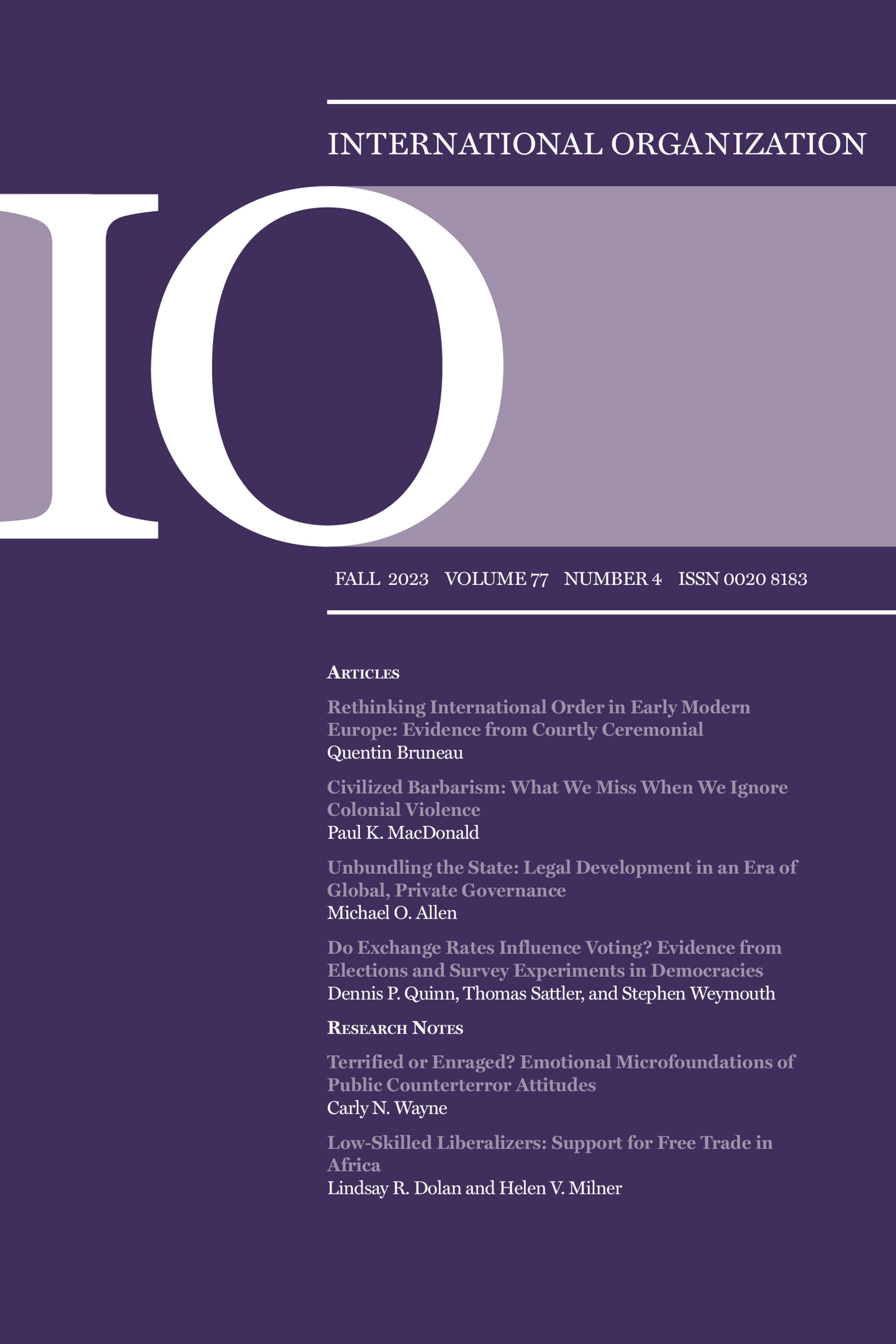收入大分化
IF 4.5
1区 社会学
Q1 INTERNATIONAL RELATIONS
引用次数: 5
摘要
摘要本文描述并解释了一种以前被忽视的国家税收实证模式。直到1913年,西方中央政府的人均收入水平与世界其他地区相似,尽管它们统治着更富裕的社会,并经历了漫长的财政创新历史。西方国家的收入水平在接下来的半个世纪里才出现了永久性的差异。我们通过构建一个新的中央政府收入面板数据集来识别20世纪的巨大收入差异,该数据集具有广泛的时空覆盖范围。为了解释这种模式,我们认为,可持续的高水平收入提取需要社会对一个激进国家的需求,以及有效的官僚机构的供应。孤立的两个因素都不够。我们在博弈论模型中形式化了这一观点。政府可以在低投入、易读性强和亲信支持的增加收入策略中进行选择。从经验上讲,我们的理论解释了低需求时期(19世纪的西方)或低官僚能力时期(20世纪的前殖民地)的低收入摄入,以及西方最终的收入激增。本文章由计算机程序翻译,如有差异,请以英文原文为准。
The Great Revenue Divergence
Abstract This article describes and explains a previously overlooked empirical pattern in state revenue collection. As late as 1913, central governments in the West collected similar levels of per capita revenue as the rest of the world, despite ruling richer societies and experiencing a long history of fiscal innovation. Western revenue levels permanently diverged only in the following half-century. We identify the twentieth-century great revenue divergence by constructing a new panel data set of central government revenue with broad spatial and temporal coverage. To explain the pattern, we argue that sustainably high levels of revenue extraction require societal demand for an activist state, and a supply of effective bureaucratic institutions. Neither factor in isolation is sufficient. We formalize this insight in a game-theoretic model. The government can choose among low-effort, legibility-intensive, and crony-favoring strategies for raising revenues. Empirically, our theory accounts for low revenue intake in periods of low demand (the nineteenth-century West) or low bureaucratic capacity (twentieth-century former colonies), and for eventual revenue spikes in the West.
求助全文
通过发布文献求助,成功后即可免费获取论文全文。
去求助
来源期刊

International Organization
Multiple-
CiteScore
14.50
自引率
1.30%
发文量
25
期刊介绍:
International Organization (IO) is a prominent peer-reviewed journal that comprehensively covers the field of international affairs. Its subject areas encompass foreign policies, international relations, political economy, security policies, environmental disputes, regional integration, alliance patterns, conflict resolution, economic development, and international capital movements. Continuously ranked among the top journals in the field, IO does not publish book reviews but instead features high-quality review essays that survey new developments, synthesize important ideas, and address key issues for future scholarship.
 求助内容:
求助内容: 应助结果提醒方式:
应助结果提醒方式:


